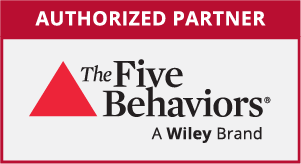This is paragraph text. Click it or hit the Manage Text button to change the font, color, size, format, and more. To set up site-wide paragraph and title styles, go to Site Theme.
Artificial Intelligence
How to Use AI Effectively
A quick start guide for faculty who’d rather teach than tinker with technology
Step I - Identify the Need

This work by Dr. Georgianna Laws is licensed under a Creative Commons Attribution-NonCommercial-ShareAlike 4.0 International License.
1. Identify the Need
Use the decision tree below to guide you determining what you need your students to do. From there, move to the next step, where you select a prompting framework to match your need.
Step II - Get the GPT to Execute Your Command
According to the GIGO (garbage in, garbage out) principle, the quality of your input directly influences the quality of the output from AI models.
- Prompting Frameworks: There’s a specific prompting framework for every need. If you’re unsure how to create an effective prompt, I recommend using the meta prompting framework, which will guide you in formulating better prompts.
- Improving Prompts: This framework can also help you enhance your most frequently used prompts, leading to improved results.
- Custom Solutions: If you regularly perform a specific task that requires consistent input of source files, consider creating a custom GPT. You can skip to step III for guidance on this process.

This work by Dr. Georgianna Laws is licensed under a Creative Commons Attribution-NonCommercial-ShareAlike 4.0 International License.
2. Choose Framework
Select the most appropriate framework that aligns with your identified need(s) from Step 1.
Framework Components:
- Action: What students need to do
- Constraints: Clear limits on the task
- Audience: Who the communication is for
Use Case:
Useful for focused, concise assignments where students must address a specific audience within clear constraints. Great for short writing, presentations, or targeted feedback.
Discipline-Specific Example:
Math Example:
- State the ACTION: Summarize the key steps in solving quadratic equations
- Specify any CONSTRAINTS: in 150 words
- Describe the AUDIENCE: for high school students
Now You Try (Template):
• Specify any CONSTRAINTS: ____
• Describe the AUDIENCE: ____
Framework Components:
- Action: What students need to do
- Purpose: Why they're doing it
- Expectation: What success looks like
Use Case:
Ideal for reflective tasks where students need to understand the purpose behind their work and have clear expectations for success.
Discipline-Specific Example:
Music Example:
- State the ACTION: Plan a rehearsal schedule
- Explain the PURPOSE: to prepare for a public performance
- Define the EXPECTATION: include specific techniques to address challenging passages
Now You Try (Template):
• Explain the PURPOSE: ____
• Define the EXPECTATION: ____
Framework Components:
- Context: The situation or scenario
- Action: What students need to do
- Results: Expected outcomes
- Example: Model or illustration
Use Case:
Best for case studies where students need to understand a specific context, take action, and see examples of expected results.
Discipline-Specific Example:
Sociology Example:
- Describe the CONTEXT: Urban community facing homelessness
- Specify the ACTION: Develop a community-based intervention
- Define the RESULTS: Measurable outcomes for reducing homelessness
- Provide an EXAMPLE: Similar successful intervention from another city
Now You Try (Template):
• Specify the ACTION: ____
• Define the RESULTS: ____
• Provide an EXAMPLE: ____
Framework Components:
- Context: The situation or problem
- Limits: Constraints or boundaries
- Action: What students need to do
- Result: Expected outcome
Use Case:
Effective for analytical tasks where students must work within specific constraints to achieve a defined result.
Discipline-Specific Example:
Accounting Example:
- Establish the CONTEXT: Quarterly financial statements with potential discrepancies
- Define the LIMITS: Using only provided documents and GAAP principles
- Specify the ACTION: Review and identify discrepancies
- Describe the RESULT: Produce a report of findings with recommendations
Now You Try (Template):
• Define the LIMITS: ____
• Specify the ACTION: ____
• Describe the RESULT: ____
Framework Components:
- Function: Purpose of the process
- Level: Complexity or depth
- Output: What will be produced
- Win Metric: How success is measured
Use Case:
Great for process-oriented assignments where students need to create something with a specific function and measurable success criteria.
Discipline-Specific Example:
Computer Science Example:
- Define the FUNCTION: Develop a user authentication system
- Specify the LEVEL: For a university portal with multiple user roles
- Describe the OUTPUT: Working code with documentation
- Establish the WIN METRIC: System passes security testing with zero critical vulnerabilities
Now You Try (Template):
• Specify the LEVEL: ____
• Describe the OUTPUT: ____
• Establish the WIN METRIC: ____
Framework Components:
- Problem: Issue to be addressed
- Goal: Desired outcome
- Solution: Proposed approach
Use Case:
Useful for problem-solving assignments where students need to identify an issue, establish goals, and develop solutions.
Discipline-Specific Example:
Athletic Training Example:
- Identify the PROBLEM: High incidence of ankle sprains in soccer players
- Establish the GOAL: Reduce ankle injuries by 30% in one season
- Develop the SOLUTION: Design a targeted exercise program focusing on proprioception and ankle strength
Now You Try (Template):
• Establish the GOAL: ____
• Develop the SOLUTION: ____
Framework Components:
- Problem: Issue or challenge to address
- Insights: Analysis and understanding
- Voice: Perspective or tone to adopt
- Outcome: Desired result or deliverable
Use Case:
Ideal for leadership projects requiring analysis and strategic recommendations from a specific perspective.
Discipline-Specific Example:
Education Example:
- Define the PROBLEM: Low student engagement in online courses
- Provide INSIGHTS: Analysis of engagement metrics and student feedback
- Specify the VOICE: As an educational technology consultant
- Describe the OUTCOME: Strategic recommendations to increase engagement by 25%
Now You Try (Template):
• Provide INSIGHTS: ____
• Specify the VOICE: ____
• Describe the OUTCOME: ____
Framework Components:
- Role: Who students are acting as
- Action: What they need to do
- Context: Situation or scenario
- Expectation: Success criteria
Use Case:
Great for curriculum design and role-playing scenarios where students need to understand their role in a specific context.
Discipline-Specific Example:
Marketing Example:
- Assign the ROLE: Marketing manager at a consumer goods company
- Define the ACTION: Launch a product campaign
- Set the CONTEXT: Targeting Gen Z consumers in a digital-first market
- Clarify the EXPECTATION: Campaign must increase brand awareness by 15% and drive 10,000 website visits
Now You Try (Template):
• Define the ACTION: ____
• Set the CONTEXT: ____
• Clarify the EXPECTATION: ____
Framework Components:
- Role: Professional identity to assume
- Aim: Purpose or objective
- Numeric Target: Measurable goal
- Input: Resources or data available
- Output: Deliverable format
Use Case:
Best for data-driven projects requiring specific measurable outcomes and clear deliverables.
Discipline-Specific Example:
Nursing Example:
- Define the ROLE: Nurse manager on a medical-surgical unit
- Specify the AIM: Improve patient handoff communication
- Set the NUMERIC TARGET: Reduce handoff-related errors by 50%
- Provide the INPUT: Current handoff protocols and error reports
- Describe the OUTPUT: New standardized handoff procedure with implementation plan
Now You Try (Template):
• Specify the AIM: ____
• Set the NUMERIC TARGET: ____
• Provide the INPUT: ____
• Describe the OUTPUT: ____
Framework Components:
- Role: Professional identity to assume
- Input: Materials to review
- Steps: Process to follow
- Expectation: Desired outcome
Use Case:
Effective for advising scenarios where students need to review materials and provide structured feedback.
Discipline-Specific Example:
Biology Example:
- Assume the ROLE: Faculty research advisor
- Review the INPUT: Undergraduate student's research proposal
- Follow these STEPS: Assess methodology, evaluate feasibility, identify knowledge gaps
- Meet this EXPECTATION: Provide constructive feedback with specific suggestions for improvement
Now You Try (Template):
• Review the INPUT: ____
• Follow these STEPS: ____
• Meet this EXPECTATION: ____
Framework Components:
- Role: Professional identity to assume
- Task: What needs to be done
- Audience: Who will receive the output
Use Case:
Useful for recommendations and feedback tasks where understanding the audience is crucial.
Discipline-Specific Example:
Finance Example:
- Adopt the ROLE: Financial advisor
- Complete this TASK: Develop a retirement plan
- Address this AUDIENCE: Clients in their 50s nearing retirement
Now You Try (Template):
• Complete this TASK: ____
• Address this AUDIENCE: ____
Framework Components:
- Role: Professional identity to assume
- Task: What needs to be done
- Format: Structure of the deliverable
Use Case:
Best for assignments requiring specific deliverables in professional formats.
Discipline-Specific Example:
International Business Example:
- Take on the ROLE: International business consultant
- Complete this TASK: Conduct a country risk assessment for expanding operations
- Use this FORMAT: Executive summary with risk matrix and recommendations
Now You Try (Template):
• Complete this TASK: ____
• Use this FORMAT: ____
Framework Components:
- Sequence: Steps or process order
- Audience: Who will use the process
- Justification: Reasoning for the approach
Use Case:
Great for process analysis where students need to explain the reasoning behind a sequence of steps.
Discipline-Specific Example:
Exercise Science Example:
- Outline the SEQUENCE: Steps in a dynamic warm-up routine
- Identify the AUDIENCE: Collegiate athletes
- Provide JUSTIFICATION: Evidence-based reasons for each exercise and its order
Now You Try (Template):
• Identify the AUDIENCE: ____
• Provide JUSTIFICATION: ____
Framework Components:
- Situation: Current context or problem
- End Goal: Desired outcome
- Example: Model or illustration
- Deliverables: Required outputs
Use Case:
Ideal for curriculum design projects with clear examples and specific deliverables.
Discipline-Specific Example:
Social Entrepreneurship Example:
- Describe the SITUATION: Food insecurity among college students
- Define the END GOAL: Establish a sustainable campus food pantry
- Provide an EXAMPLE: Successful model from another university
- Specify DELIVERABLES: Business plan, budget, operational guidelines, and marketing materials
Now You Try (Template):
• Define the END GOAL: ____
• Provide an EXAMPLE: ____
• Specify DELIVERABLES: ____
Framework Components:
- Scenario: Case or situation
- Objectives: Learning goals
- Narrative: Story or progression
- Artifacts: Evidence or deliverables
- Reasoning: Justification for decisions
Use Case:
Best for clinical assignments that require case-based reasoning and evidence-based decision making.
Discipline-Specific Example:
Psychology Example:
- Present the SCENARIO: 15-year-old patient presenting with symptoms of anxiety
- Define the OBJECTIVES: Assess symptoms, identify triggers, and develop coping strategies
- Develop the NARRATIVE: Patient history, family dynamics, and progression of symptoms
- Specify the ARTIFACTS: Assessment results, treatment plan, and progress notes
- Require REASONING: Evidence-based justification for chosen interventions
Now You Try (Template):
• Define the OBJECTIVES: ____
• Develop the NARRATIVE: ____
• Specify the ARTIFACTS: ____
• Require REASONING: ____
Framework Components:
- Task: Assignment or challenge
- Action: Specific steps to take
- Goal: Desired outcome
Use Case:
Effective for lab work and practical assignments with clear procedures and outcomes.
Discipline-Specific Example:
Rehabilitation Science Example:
- Define the TASK: Assess range of motion in post-surgical patients
- Outline the ACTION: Use goniometer to measure joint angles following standard protocol
- Specify the GOAL: Accurately document baseline measurements and track progress over time
Now You Try (Template):
• Outline the ACTION: ____
• Specify the GOAL: ____
Framework Components:
Meta prompting is a technique for teaching effective prompt creation or for getting help when you're not sure how to structure your request.
Use Case:
Instructional support for users unsure of how to prompt or for teaching students how to create effective prompts.
Discipline-Specific Example:
Dramatic Media Example:
- Ask the AI to help you create an effective prompt for generating a script outline
- Request guidance on what elements to include in your prompt
- Ask for examples of well-structured prompts for creative writing tasks
Now You Try (Template):
What elements should I include in my prompt to get the best results?
Can you provide an example of a well-structured prompt for this purpose?
No frameworks match your search criteria.
Step III - Build a Custom ChatGPT
Creating custom GPTs allows you, as faculty, to tailor the AI's capabilities to meet your specific needs or those of your students. You may wish to build a custom GPT for yourself, focusing on the tasks you execute most frequently. Alternatively, you can create one for your students to help them complete essential tasks vital for success in their classes and in college overall. This customization can enhance efficiency and accuracy, streamlining workflows and optimizing the learning experience. Let’s explore how to get started with this process.

This work by Dr. Georgianna Laws is licensed under a Creative Commons Attribution-NonCommercial-ShareAlike 4.0 International License.


